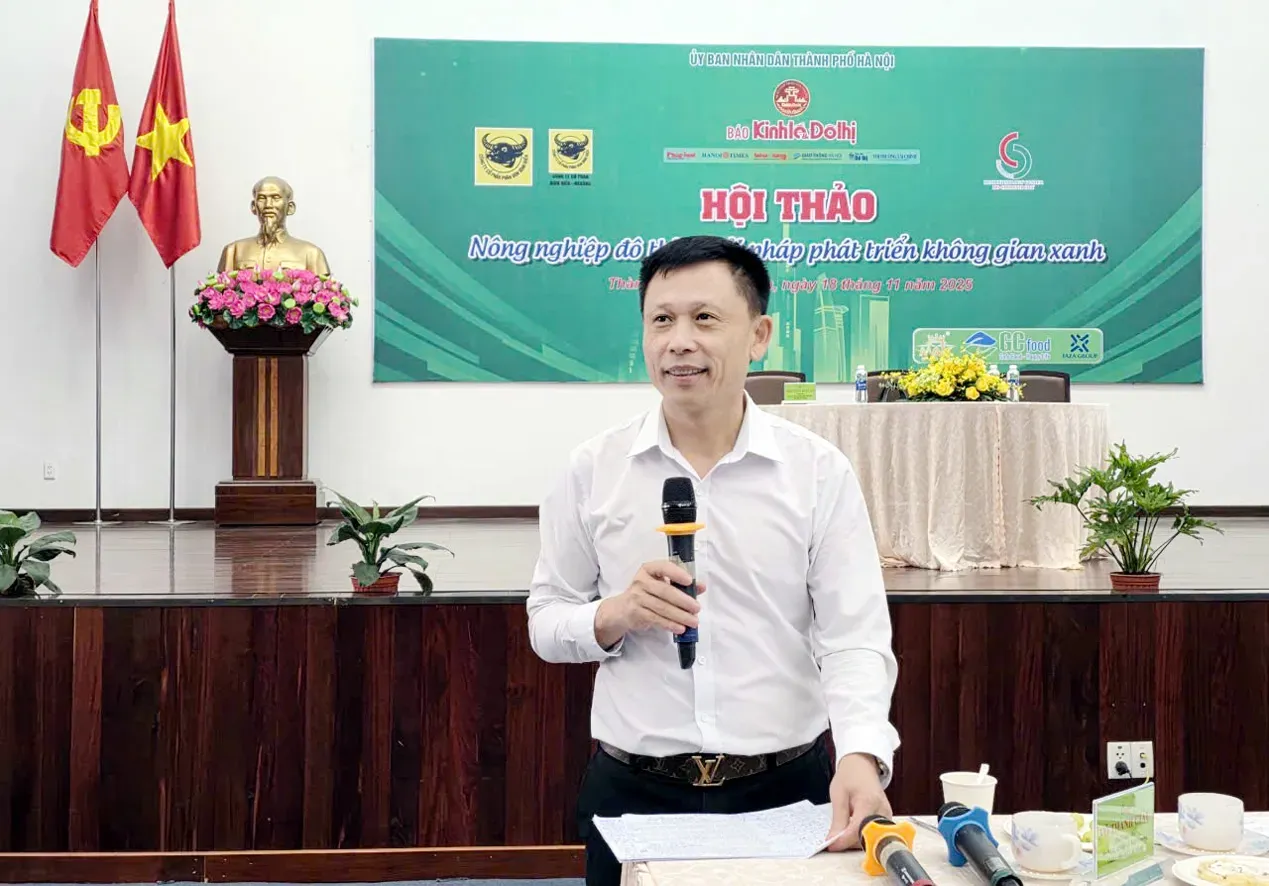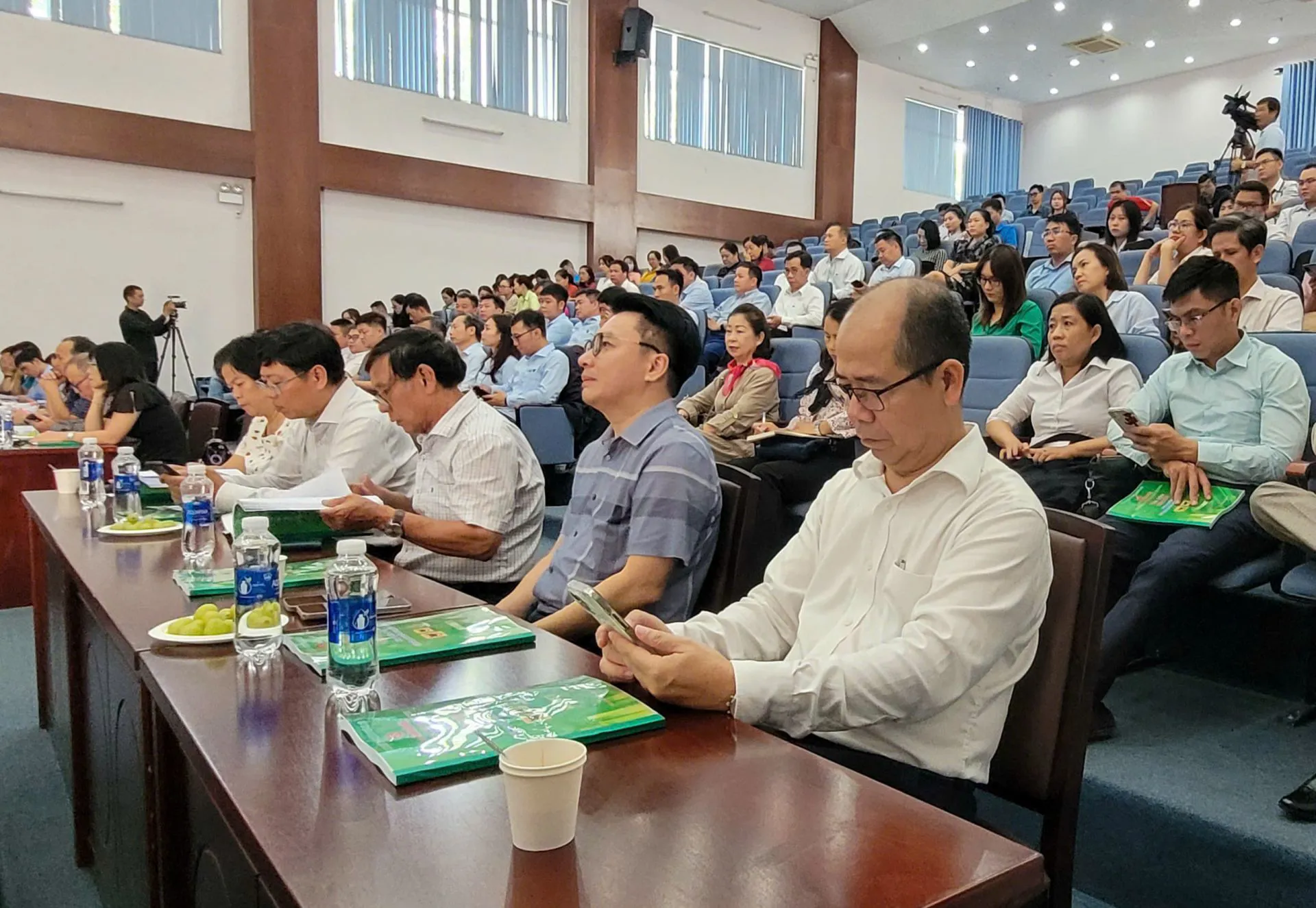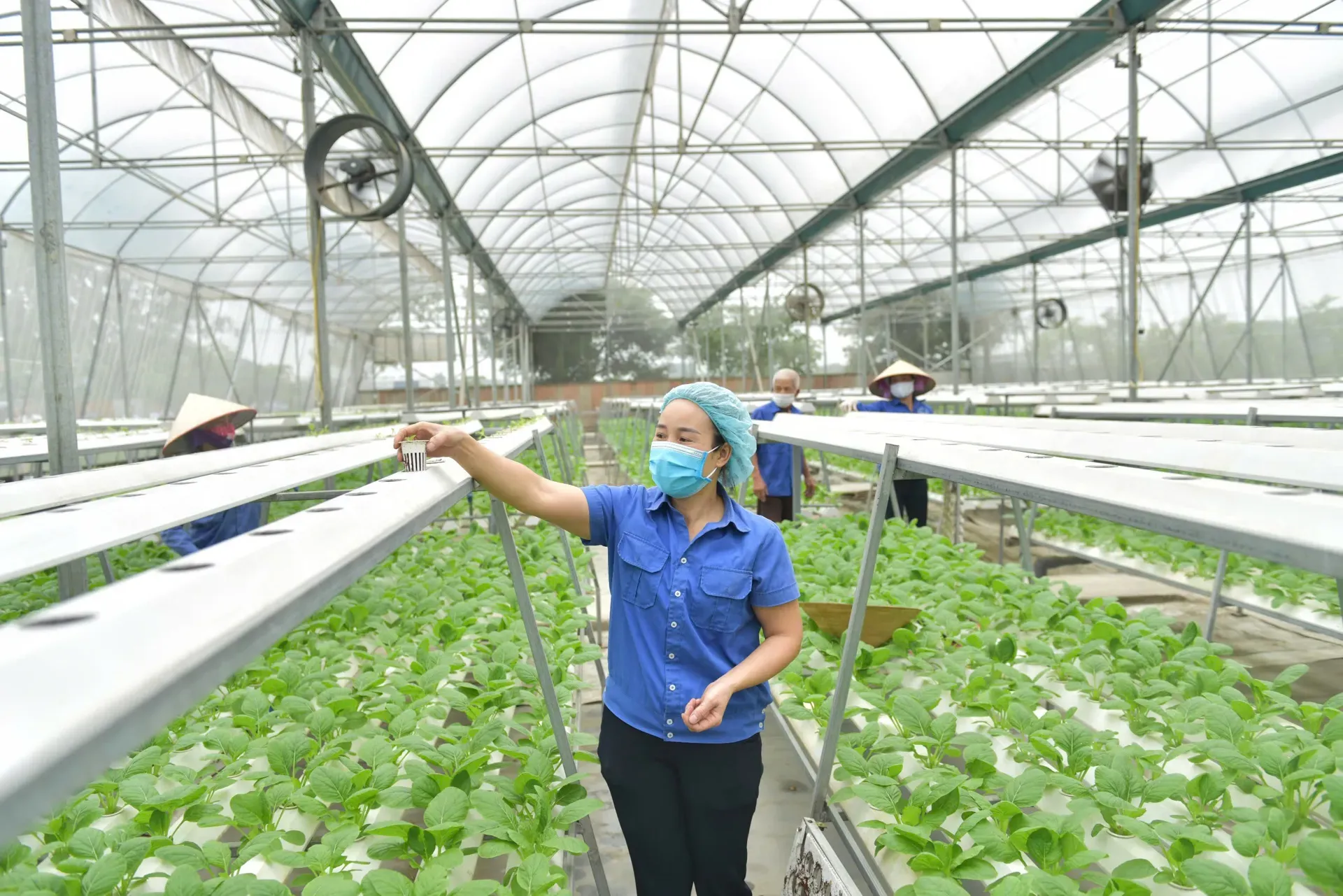Urban agriculture offers green solutions for fast-growing Vietnamese cities
As major cities in Vietnam undergo rapid transformation, urban agriculture can expand green spaces, improve the ecological environment and support sustainable living.
Experts, scholars and businesses at a workshop in Ho Chi Minh City on November 18 highlighted the urgent need to expand urban agriculture as big Vietnamese cities struggle with shrinking green space and rising environmental pressure.
The discussions were made at the “Urban Agriculture – Green Space Development Solutions” workshop organized by Kinh te & Do thi (Economic & Urban) Newspaper in cooperation with the Ho Chi Minh City Biotechnology Center, Binh Dien Fertilizer Joint Stock Company and Binh Dien Mekong JSC.
The state of green space in major cities
According to Associate Professor Nguyen Thanh Loi, Editor-in-Chief of Kinh te & Do thi Newspaper, Vietnam’s urbanization has surged over the past two decades.

Editor-in-Chief Nguyen Thanh Loi of Kinh te & Do thi Newspaper delivers his remarks at the seminar. Photo: kinhtedothi.vn
The rapid rise of urban populations has created growing pressure on living space, the environment, transport, technical infrastructure and overall quality of life. Many major cities face shrinking green areas, higher air pollution and stronger impacts of climate change.
Tran Dinh Ly, Vice President of Nong Lam University Ho Chi Minh City, said green space in major cities such as Hanoi and Ho Chi Minh City remains extremely limited, affecting living conditions and public health.
Ho Chi Minh City currently has only 0.55m2 of green space per person, far below regional and global levels. Singapore has about 66 square meters per person, Kuala Lumpur around 23m2, Tokyo 10m2–12m2 and Bangkok 7m2.
“Even though Ho Chi Minh City planted more than 42,500 new trees and added 237 hectares of parks between 2020 and 2025, growth still lags behind demand. We need timely solutions for expanding green space and developing urban agriculture,” Ly said.
In this context, he stressed that green space must become a required criterion in planning rather than a slogan.
Urban agriculture should be elevated to a strategic direction, including farms in shopping malls, vertical farming, community gardens in residential areas and farm-in-mall models used in several Asian cities, Editor-in-Chief Loi said.
However, urban agriculture still faces many obstacles, especially incomplete policies related to land and infrastructure.
High-tech farming remains difficult to access because investment costs are high for many households and cooperatives. Supply-demand connections are limited and several successful models struggle to link with stable markets, Loi said.
He added that city infrastructure was not designed to integrate agricultural space from the beginning. The lack of coordination among authorities, scientists, businesses and residents has made many models unsustainable.

Delegates at the workshop.
Nguyen Hai An, Director of the Ho Chi Minh City Biotechnology Center, said farmers still have limited access to scientific advances and practical production models suitable for local conditions.
“The city must improve planning first and identify suitable production zones based on soil, geography and each community’s strengths. Then we can study practical transfer models,” he said.
“For legal mechanisms on land and finance, the city needs clearer solutions to help farmers and cooperatives access production tools. Training human resources is essential for development,” An added.
Agricultural expert Nguyen Dang Nghia said urban agriculture covers more than rooftop vegetables. It includes biological livestock farming and diverse agricultural production, from tropical to temperate vegetables grown right in a tropical city.
“Policies are not effective in practice, so farmers still struggle on their own. We lack a credible arbitration center to verify and endorse safe, clean agricultural products and good models. Urban agriculture will gain momentum only when policies improve,” he said.
Biotechnology as a key driver
Hai An from the Ho Chi Minh City Biotechnology Center said biotechnology is becoming a key driver of urban agriculture.

A high-tech farm in Noi Bai Commune, Hanoi. Photo: Pham Hung/The Hanoi Times
Advances such as drought- and salt-tolerant varieties and waste-degrading microbes used in aquaponics systems can increase yields by 20%–30% and reduce water and energy use.
He said biotech solutions reduce pesticide use by 40%, save 15%–20% in operating costs, extend the shelf life of produce and cut post-harvest losses by up to 45%.
Vertical farming also multiplies productivity and lowers CO₂ emissions because transport distances shrink. Biotechnology creates new jobs, strengthens food self-reliance and improves urban nutrition.
To fully benefit from these technologies, he said cities must complete the legal framework for genetically modified organism (GMO), support startups and expand communication to ease social concerns.
In Ho Chi Minh City, Hanoi, Danang and Cantho, rooftop farms, hydroponic and aeroponic systems and agricultural tourism are helping shape modern cities that blend with nature, while reducing heat radiation, absorb CO₂, improving microclimates and creating economic opportunities.
The Ho Chi Minh City Biotechnology Center has spent 20 years researching and developing crops and livestock suitable for urban agriculture, including vegetables, flowers and biological products that increase productivity and value.
The center has transferred many scientific advances to residents and businesses, improving production efficiency and product quality.
Driven by technological momentum, many businesses and cooperatives have shifted from traditional production to high-tech models with clear results.
Tuan Ngoc Agricultural Cooperative in Long Truong Ward, Ho Chi Minh City, is a leading example.
According to Director Lam Ngoc Tuan, the cooperative has applied modern technologies to produce clean, green and safe products and built a new-style cooperative that connects production with consumption.
With a combined recirculating-and-static hydroponic model inside closed greenhouses using automated processes, the cooperative cut water use by 40%–50% and labor costs by 30%. Its VietGAP-certified products supply 8–12 tons a month to major supermarket chains.
“Thanks to modern hydroponics, productivity rose 25% compared to traditional farming. Stable prices help members earn VND15 million - VND18 million (US$568-$682) a month, 1.5–2 times higher than small household farms,” Tuan said.
Converting organic waste (which accounts for 45%–55% of unrecycled waste) into biochar is also gaining attention.
Pham Hoai Trung from Azitech – GreenGo said: “One ton of biochar from pyrolysis can lock up 2 to 3 tons of CO₂-equivalent greenhouse gases.”
He said this solution helps businesses meet multiple goals: waste treatment, soil improvement and generating carbon credits.
Meanwhile, rooftop gardens and green walls were proposed by Vu Thi Quyen from Van Lang University as solutions to reduce urban heat islands and support stormwater management.








